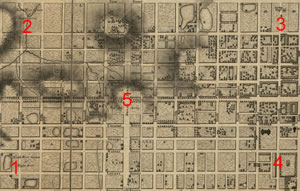
In a city like Philadelphia, the history is obvious. Most are aware of its role in the founding of our nation, its status as a home to Benjamin Franklin, and its housing of the Liberty Bell. What often gets over-looked, however, is history on a more basic level: the evolution of its design. From the buildings, to the roads, to the parks, these fundamental elements of the city have very storied pasts. A great case study of this local history can be found in Rittenhouse Square.
Rittenhouse Square lies in the southwest quadrant of downtown Philadelphia, between 18th and 19th streets. Since its birth in 1682 through the work of Pennsylvania’s founder, William Penn, the Square has acted as a respite for the nature-deprived residents of Philadelphia.
Although many visitors to Philadelphia consider Rittenhouse Square to simply be one of several parks in Center City, its turbulent evolution sets it apart. From its conception in the late 17th century to its current state, the Square has been a focal point of the city of Philadelphia. Containing various high-end condominiums, hotels and restaurants, the neighborhood around the Square has the reputation of housing the city’s wealthiest residents. While the attention afforded to the Square has undergone peaks and valleys throughout its existence, the ever-vocal locals have always been quick to speak-out and step-up to protect it.
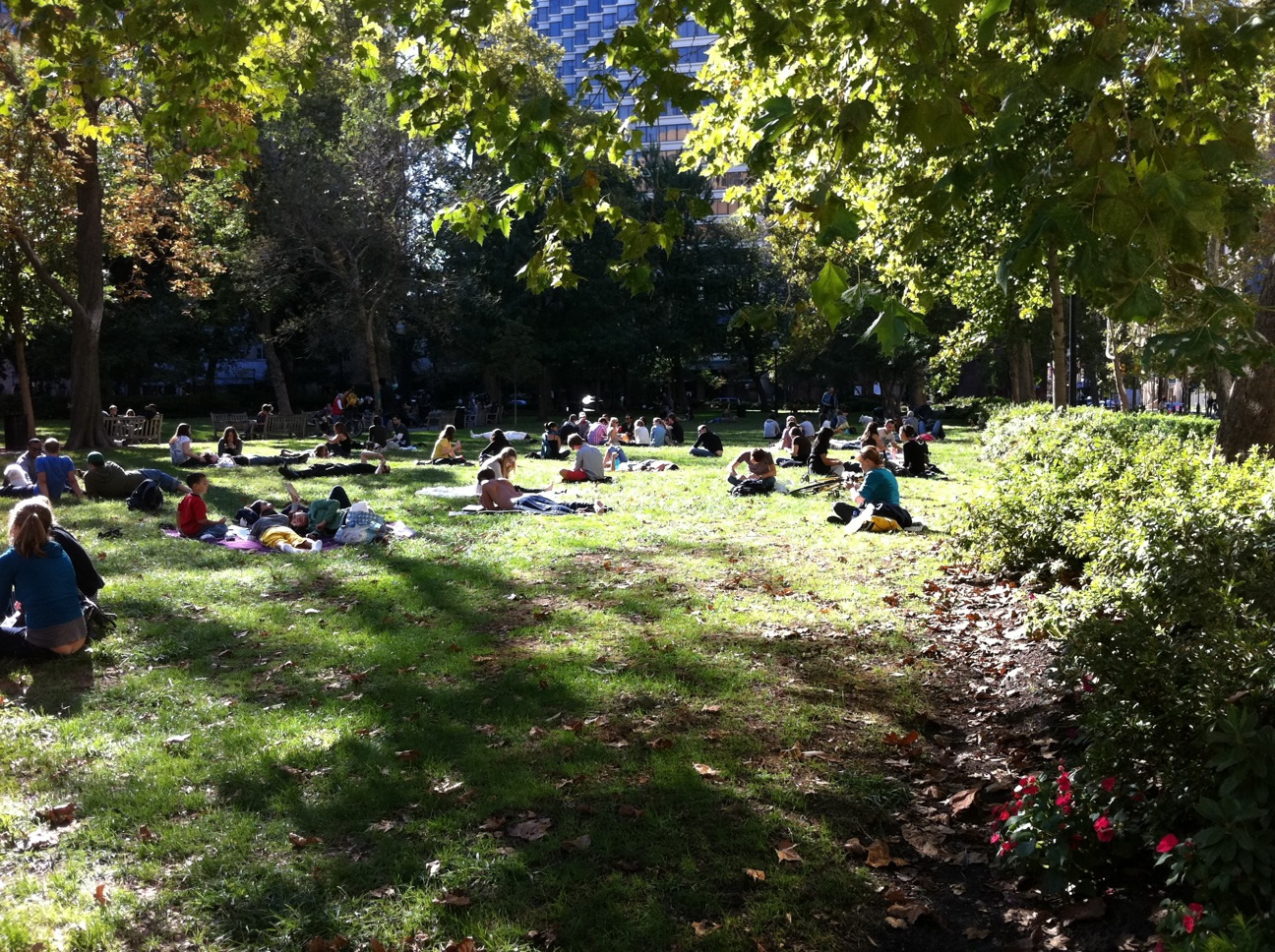
William Penn’s original aim for the city of Philadelphia was that of a “greene Country Towne.” When Penn had his deputy governor and surveyor, Thomas Holme, draw up a plan for the city, he had him include five square parks: one in each quadrant of the rectangular city, and one in the center (now the site of City Hall.) He named each space after its location, with “Southwest Square” being the original name of what is now Rittenhouse Square.
Ever the capitalist, Penn retained the real estate on at least one side of each of the four parks for himself, which he planned to sell later as the areas became developed, and values rose. Mostly owned by overseas investors, the remaining property surrounding Southwest Square laid undeveloped for years. The current neighborhood of Rittenhouse Square was then known as “the Governor’s Woods,” due to William Penn’s stake in the properties there, and its arboreal state. In fact, many considered the area to make for great hunting. The five-shilling fine for shooting pigeons in the streets of the city, implemented in 1729, led to the area being a quite popular place for those seeking game.
The first step in developing the area surrounding the park came rather indirectly. According to Marion Rivinus in her book The Story of Rittenhouse Square, shortly before the British army occupied Philadelphia in 1777, the citizens decided to chop down the remaining trees in the west part of the city and sell them to the army, rather than let them fall into enemy hands. Whether motivated by revenue generation or patriotism, the clearing of trees created the potential for future development.
Decades passed, however, without any such development. A concerned reader voiced his grievances through a February 29, 1792, edition of the Pennsylvania Gazette, in one of many future citizen outcries. “…purchasers next to these squares have paid more for their grounds in expectation of the original design being executed.” The reader names Northeast Square as a prime example in that it “…is become the receptacle of stagnant waters, of dung, human excrement, and all kinds of filth, – so that a stranger passing into the city, instead of being saluted with beautiful appearances of groves, meets what is offensive to his eye and most of his other senses.” The reader then calls for the planting of trees, the prevention of encroachments, and other improvements. “In addition to exercise and recreation, it would conduce to the health of the city by the increased salubrity of the air; for it is an established fact, that trees and vegetation have this happy effect.” The expense, he suggests, would be “trifling,” with the advantages “great and growing.”
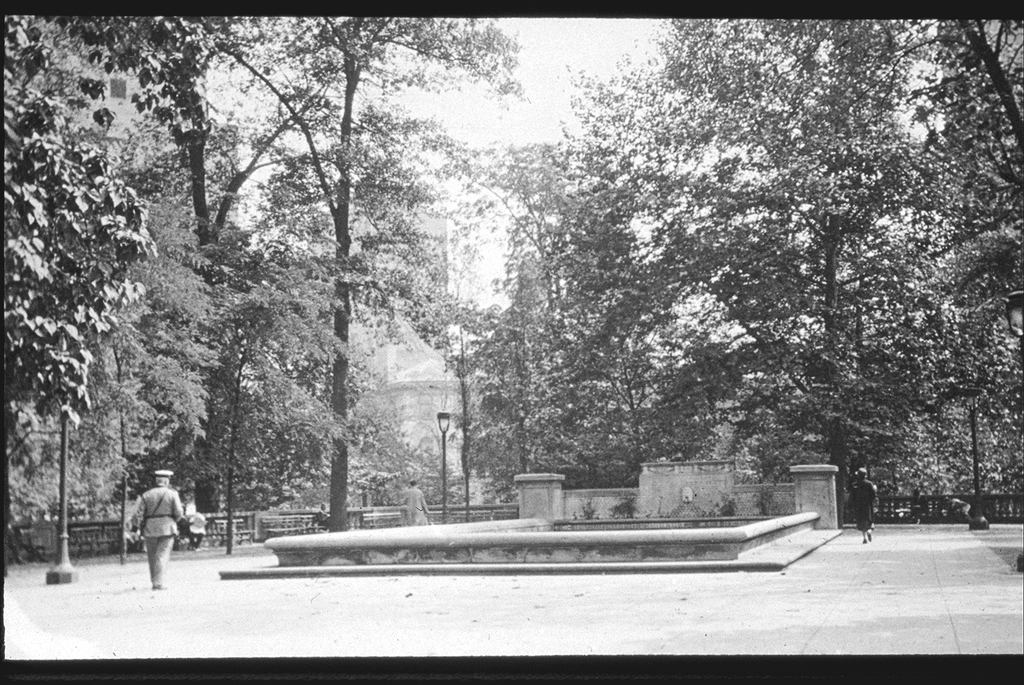
This trifling amount came to about $800, which the local residents provided to the city in an interest-free loan in 1816 to fund a recently approved resolution. The resolution, passed by Philadelphia’s then two City Councils, called to fence Southwest Square, and to till and sod the parts “not used for a particular purpose,” which Nancy Heinzen, in The Perfect Square: The Story of Rittenhouse Square, speculates meant areas used as dumping grounds. This would be the first of many community-driven improvements to the Square.
As Charles J. Cohen recalls in Rittenhouse Square, Past and Present, sometimes pedestrians passing through the park would not hear the bell signaling the closing of the newly created fencing and gates, requiring a choice to be made between spending the night in the open and climbing the fence at the expense of one’s clothing.
Rivinus provides an amusing image of such a scene:
“Which raises quite a diverting mental picture of some of our distinguished lawyers, green bag in hand and long catching coat-tails, scrambling over the barrier, probably muttering in not too technical terms what they thought of the caretaker. In the days before the promiscuous brief case, all Philadelphia lawyers carried green cloth bags, with a drawing string at the top, as a proud badge of their profession. It might be a subject for a debating society, which went over the fence first, the lawyer or the bag?”

Still known at the time as Southwest Square, the park remained the only of Penn’s original four that had yet to be granted a name unrelated to its location. Franklin, Washington, and Logan Squares all bore the names of notable Americans. Finally, in 1825, the City Councils decided to rename Southwest Square “Rittenhouse Square.” The least well known of the four namesakes, except perhaps for Logan, a former Philadelphia mayor and Pennsylvania governor, David Rittenhouse bore many titles, including astronomer, clockmaker, inventor, and first Director of the U.S. Mint. Overshadowed, according to Heinzen, by the famous Philadelphian Benjamin Franklin, Rittenhouse never obtained much real estate in the minds of American historians. Unbeknownst to him, as the naming occurred years after this death, Rittenhouse Square is likely the man’s most lasting legacy.
The American Philosophical Society, which Rittenhouse once served as president, proposed in 1840 to build an observatory on the grounds of the Square in Rittenhouse’s honor. According to Rivinus, the Society claimed to have the funds for the structure, but found the only appropriate location of the building to be one of the “public squares, and none of them have the advantages possessed by Rittenhouse Square.” The Councils passed a bill allowing the group to construct the observatory in the site, but included a clause enabling its removal whenever the Mayor or the Councils saw fit. The Society decided against the endeavor, feeling the clause made the project too risky.
Heinzen notes the City Councils’ actions in this case as the first time local government intervened in the life of the Square. It would prove to be one of many times local Philadelphians fought to shape the park in the method they saw fit, or to prevent others from shaping it in ways they opposed. In March of 1884, a “plan for the improvement of Rittenhouse Square” was announced by the Councils. Essentially a response to congestion in the city, a result of the exponential population growth in the late 1800s, the plan called for a widening of the streets outlining the Square, and the removal of dozens of trees, as well as the iron fence, surrounding the park.
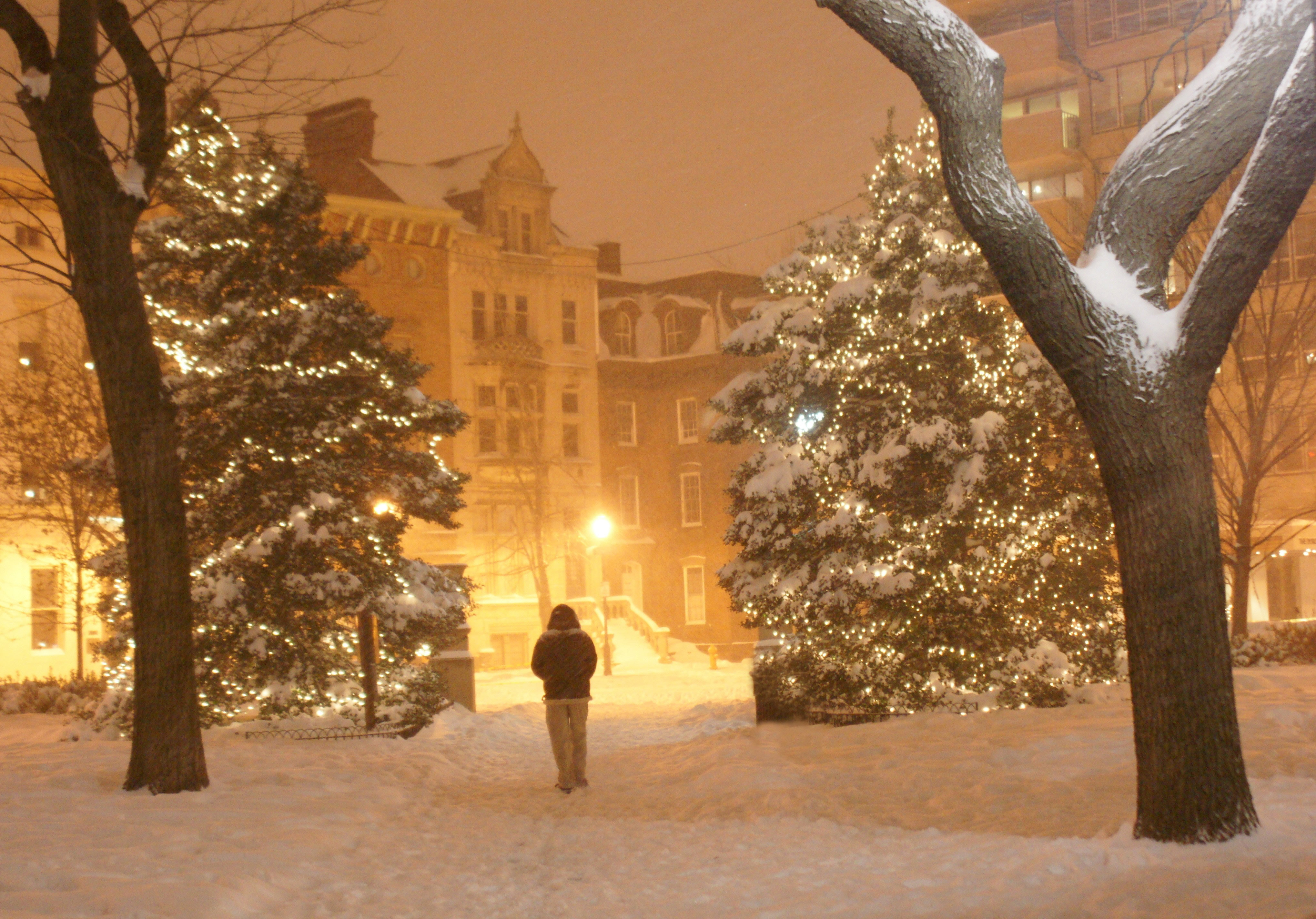
The residents of the Square predictably disliked this plan, and the inclusion of a clause calling to replace the gravel walkways with asphalt only further convinced them that the Square was threatened. Several female residents of the Square felt a need to organize in order the fight the proposal and preserve the park for their families. This resulted in a meeting soon after, where a petition was created and signed by nearly 1,200 individuals, calling for the Councils to reconsider their plans to alter Rittenhouse Square.
Their main argument in the petition, according to Heinzen, listed the benefits the park served the community in its current state. It was a “health-preserving resort” for the residents, and the gravel was both cooler than asphalt, and safer for falling children. The iron rails protected the Square from “bulls, cows, and other savage animals,” a problem current residents surely do not worry themselves with. Cohen specifically recalls nights when passing clouds obstructed the moonlight, resulting in “disconcerting” encounters between “sober citizens wending their way homeward,” and stray cows.
Despite these well-formed arguments, the petition was not terribly successful. While they did prevent the most altering proposal (the widening of the streets,) other changes managed to proceed. The Councils had the railings removed and the gravel walks repaved with asphalt, a change many roller-skating youth were actually quite happy about.
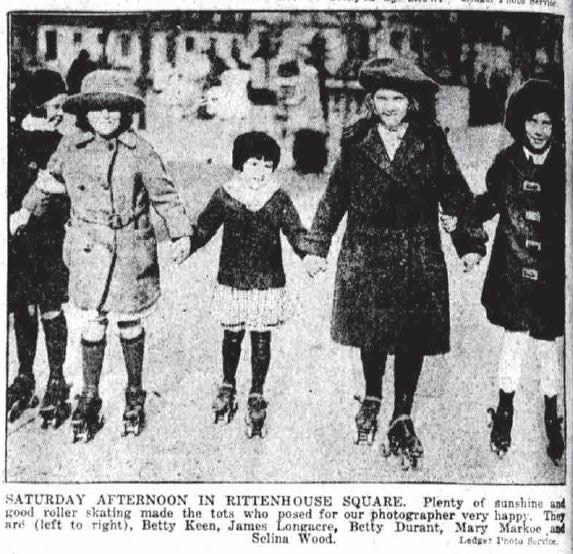
Years later, in 1913, Bill White and Elizabeth Martin, two wealthy and prominent Philadelphians, got together to form the Rittenhouse Square Improvement Association. The catalyst for the group’s creation stemmed from the pair’s vacations in Europe, and the subsequent comparison of the beauty of the parks overseas with the mediocrity of the Square back home. In fact, to motivate the other residents at the first meeting, Ms. Martin showed a slide of the breath-taking Parc Monceau of Paris, followed by one of Rittenhouse Square. The resulting “gasps” by those in attendance demonstrated the effectiveness of this visual demonstration. They found the winding walkways and scattered statues throughout the Parisian park much more appealing than Rittenhouse Square’s somewhat bland design, a fact that has been reflected in today’s Rittenhouse, which bears many of the same features of Monceau.
Soon after the official creation of the organization, improvements began in the Square. $30,000 was raised for the effort, a substantial sum at the time, and a testament to the wealthy residents’ passion for the Square. Two attendants and a foreman supervisor were hired, imported benches from France were placed, and hundreds of plants and shrubbery were planted. A letter sent to members the next year asked for further financial donations, citing the work that had been completed, and improvements still to come.
Despite the explanation of the group’s accomplishments, further fund raising proved rather weak. Through exploring alternative methods to raise the necessary funds, a tradition began that survives to present day: a Flower Market held in the Square each May, with, at the time, a portion of the proceeds going to the Association. Similar to the renovation of the Square, the idea for the Flower Market was taken from Paris. This time, the Flower Market in the Place de la Madeleine provided the inspiration. Soon after, the Rittenhouse Square Flower Market Association emerged.
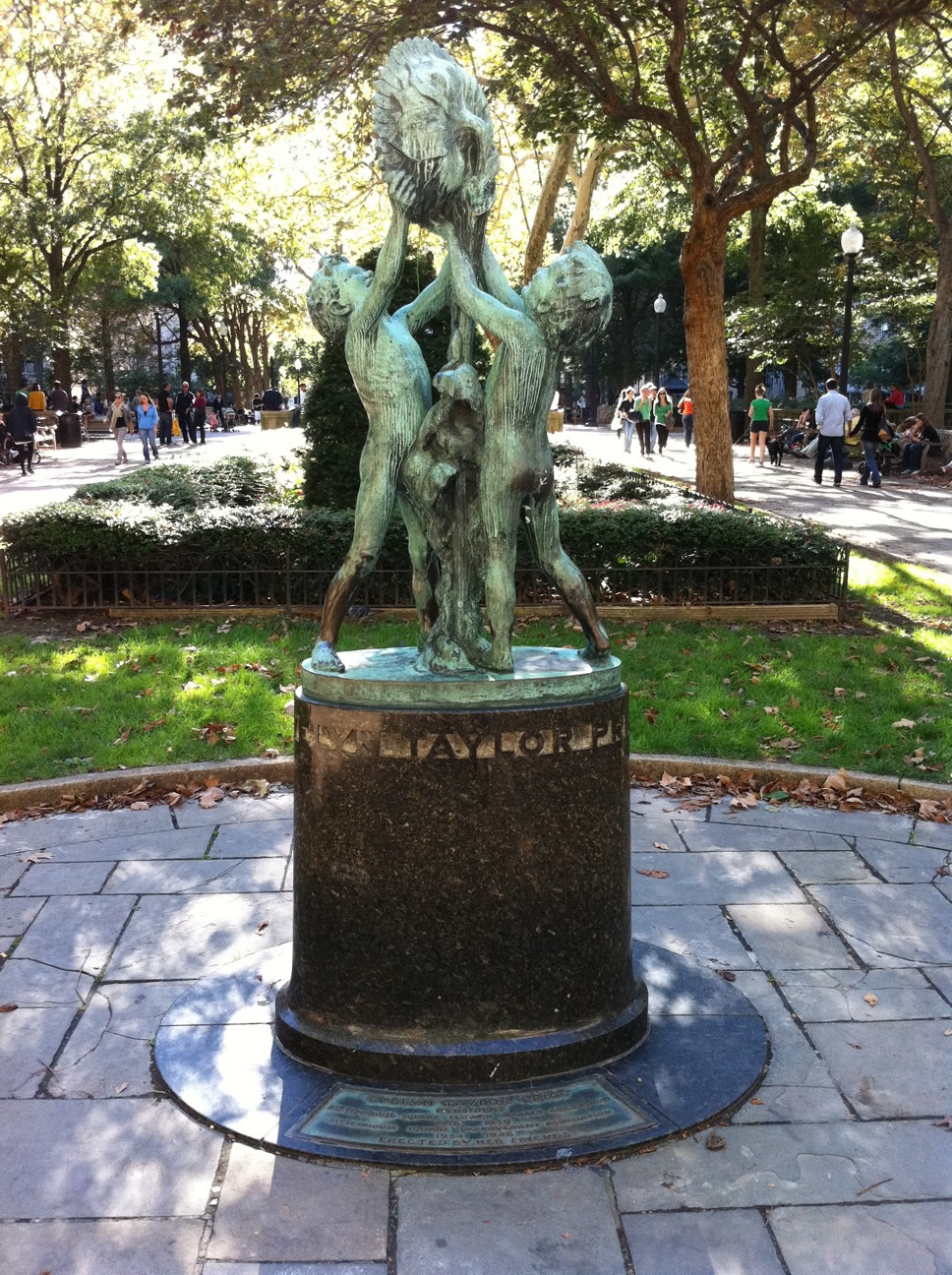
The first Flower Market took place on May 20, 1914, and raised $1,250 each for The Children’s Hospital, the Hope Day Nursery, and the Rittenhouse Square Improvement Association. Now called the Rittenhouse Square Flower Market for Children’s Charities, the group runs the oldest continuously-held event in the Square, according to the organization’s website. Currently, the Market entirely benefits children’s charities, and in May of this year, the two day event raised funds for Boys & Girls Clubs of Philadelphia, Smith the Kids’ Play Place in the Park, Tabor Children’s Services, and Youth Service, Inc.
Erected in honor of one time president of the Flower Market Association, Evelyn Price, the Sundial sculpture, which sits in northeast corner of the park, remains one of the Square’s most notable pieces of art. Created and placed the year following Mrs. Price’s death in 1946, the statue further demonstrates the long-lasting effects the Flower Markets have had on the park.
While the monetary issues were the primary concerns of the earlier part of the century, the 1950s introduced a new threat: commercial development. The economic growth in post World War II Philadelphia brought with it a significant increase in commercial buildings and automobile traffic. When Rittenhouse Square was proposed as the site of a large underground garage in 1950, the passion of the locals ignited, as Heinzen recalls: “…the garage crisis became a rallying point for a new civic organization and indeed a revived vision of urban life.” Once again, Rittenhouse Square was to bring to life a communal organization, with the park at its core.
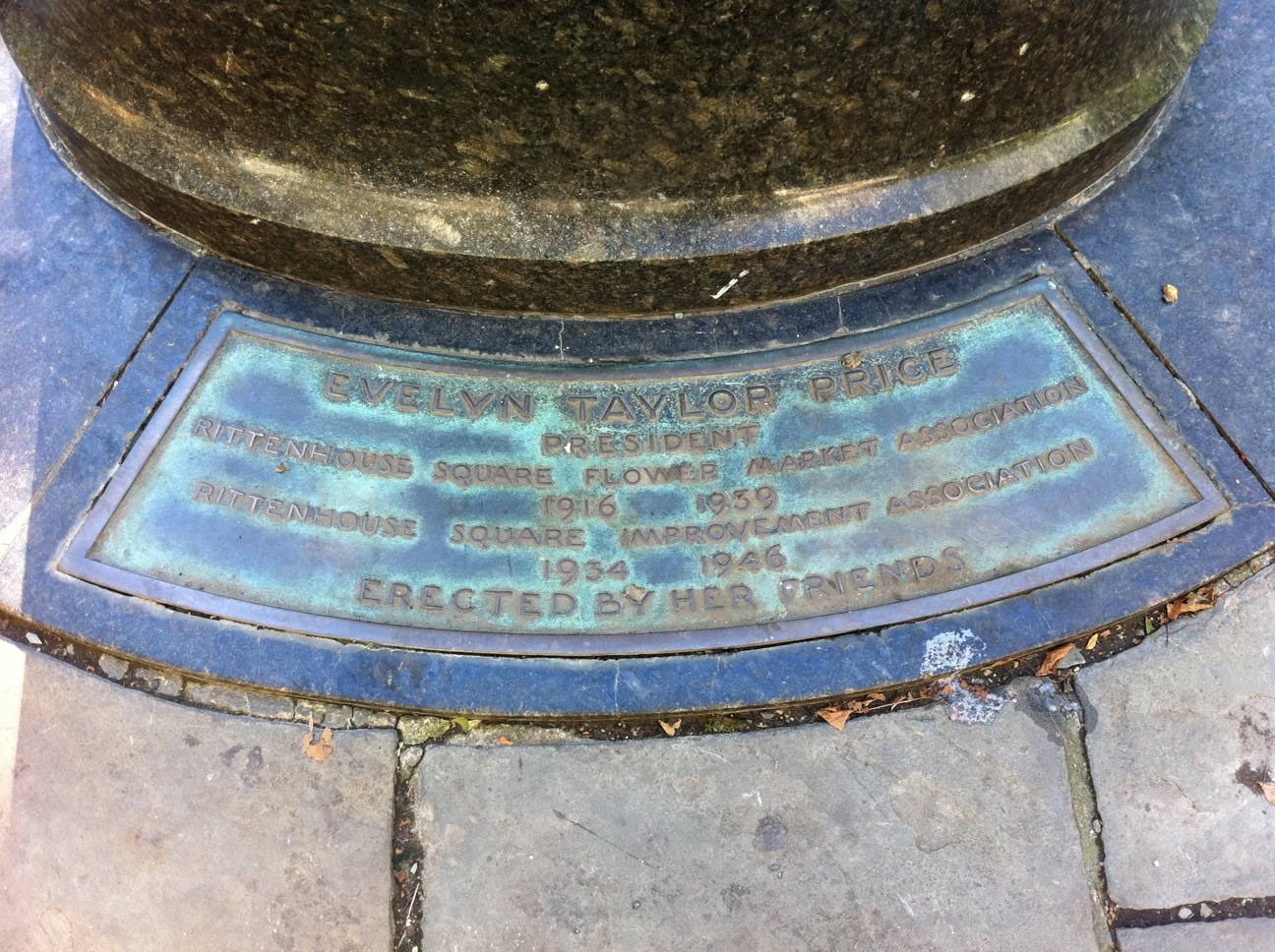
The Center City Residents Association, founded only a few years earlier by dismayed inhabitants of the city, lacked substantial support prior to the garage proposal. Following the announcement of the garage plan, however, over 500 residents turned out to a meeting at a nearby YMCA to voice their opinions to the developer. The meeting was filled with various displays of outrage, including a threat by several in attendance to march on City Hall, or sue to the developer. A few days later, the proposal died before ever reaching City Council, echoing the results of the similar outcry in response to proposed changes to the Square in 1884. As we have seen multiple times, when their park is threatened, the residents of the Rittenhouse Square neighborhood respond en masse.
This galvanizing feature of the park remains true today, as seen by the recent resignation of Wendy Rosen, who had been president of Friends of Rittenhouse Square, a modern day Improvement Association, for 16 years. According to a July 30, 2010 article in The Philadelphia Inquirer, the non-profit organization, under Rosen, paid a consultant to design and execute money-generating ideas for the park, such as building kiosks to sell drinks and sandwiches, to make up for budget short-falls. As word spread of these plans, membership in the group doubled from 390 to 780 in a matter of months, and a wave of angry emails, letters, and public meetings caused the plans to be canceled, forcing Wendy Rosen to give up her position.
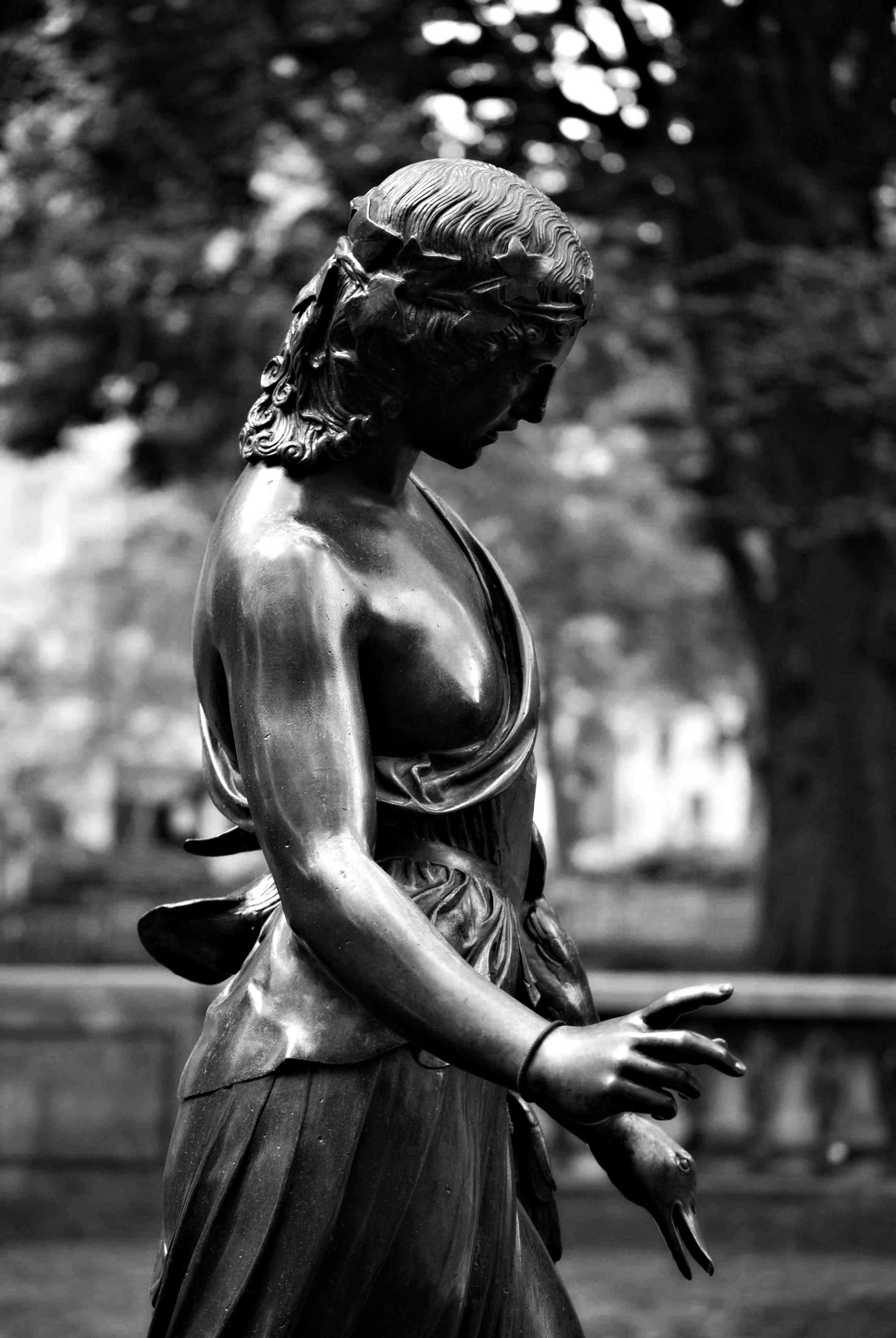
After over three centuries in Philadelphia, the passion locals feel for Rittenhouse Square remains vibrant. When asked about the importance of the park in her neighborhood, 23-year-old law student Corrin Johnson describes it as “…a focal point. It’s what everyone uses as a meeting spot, and it just adds so much to the area, which sometimes gets a little congested. My friends and I love it - a little break from the city.”
Although lulls in attention occur frequently over its storied past, whenever a threat presents itself, defenders of “the Governor’s Woods” are quick to step up. “I normally don’t get involved in local organizations like that, but if they tried to change the park, I would definitely want to join the fight against it,” said Ms. Johnson, when asked about Friends of Rittenhouse. Facing a plethora of historical competition throughout the city, Rittenhouse Square is often passed over by visitors, but rarely unappreciated, or left defenseless, by those who call its neighborhood home.
The Center wishes to thank Ruth Savitz of Photosofphiladelphia.com and Ken Mensack of Ken Mensack Photography for their assistance in illustrating this article.
Sources:
- Heinzen, Nancy M. The Perfect Square: A History of Rittenhouse Square. Philadelphia: Temple University Press, 2009.
- “Messrs. HALL & SELLERS, The Following Memorial to the Corporation” The Pennsylvania Gazette. 29 Feb. 1792.
- Rivinus, Marion Wills Martin. The Story of Rittenhouse Square, 1682 – 1951. Philadelphia: S.A. Wilson Company, 1952.
- Rittenhouse Square Flower Market for Children’s Charities Website. “History” 2009 < http://rittenhousesquareflowermarket.com/home/about-2/history/>
- Dribben, Melissa. “President of Friends of Rittenhouse Square stepping down.” The Philadelphia Inquirer 30 July 2010: B6.
- Cohen, Charles Joseph. Rittenhouse Square, Past and Present. Philadelphia: Privately printed, 1922.
